5. Edge of Tomorrow (Dir. Doug Liman, 2014)
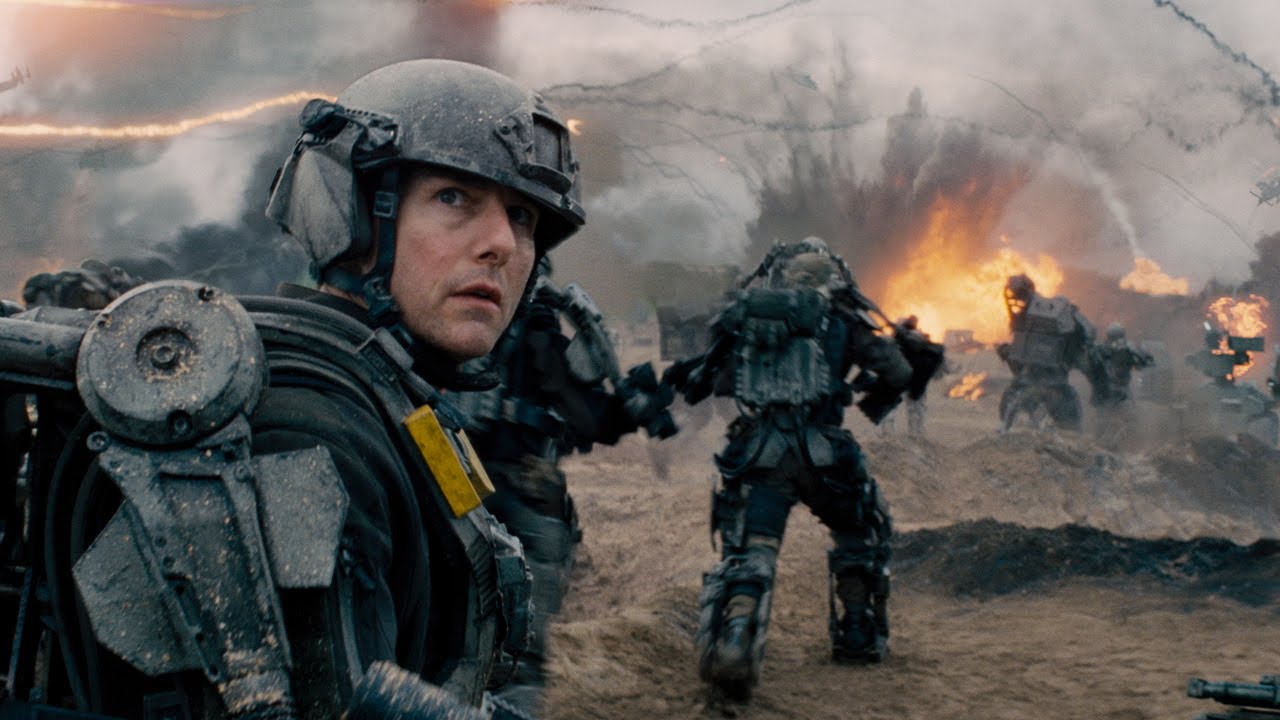
‘Groundhog Day’ meets ‘Starship Troopers’ in this excellent Sci-Fi film based on the Japanese light novel “All you need is kill”, by Hiroshi Sakurazaka.
Following the invasion of Europe by an alien race (Mimics), nations form a global military alliance and enter a massive war in order to save humankind from extinction. The new mech-suits bring the allies a technological advantage and an important victory at Verdun, as well as hope that the conflict can be won.
Major William Cage (Tom Cruise), a PR officer with no combat experience, is sent, against his will and in spite of his protests, to cover a large-scale operation in France (similar to the invasion of Normandy), getting killed within minutes from landing. Before dying, Cage gets infected with the blood of an Alpha alien in the process, which allows him to relive his last day, over and over again. But being caught in this time loop also gives him time to train and get increasingly better at fighting this war, as well as a chance to understand how this alien enemy works and discover its vulnerabilities.
Teaming-up with living legend Rita Vrataski (Emily Blunt), the “Angel of Verdun”, who used the same ability in battle, before losing it during a blood transfusion, Cage gets an impressive character arc, starting off as an inexperienced officer and becoming one of the most skilled warriors ever.
This film is a truly special, non-linear, sci-fi story with great action scenes, impressive CGI and a well-paced script that never gets boring. Live. Die. Repeat.
4. District 9 (Dir. Neill Blomkamp, 2009)
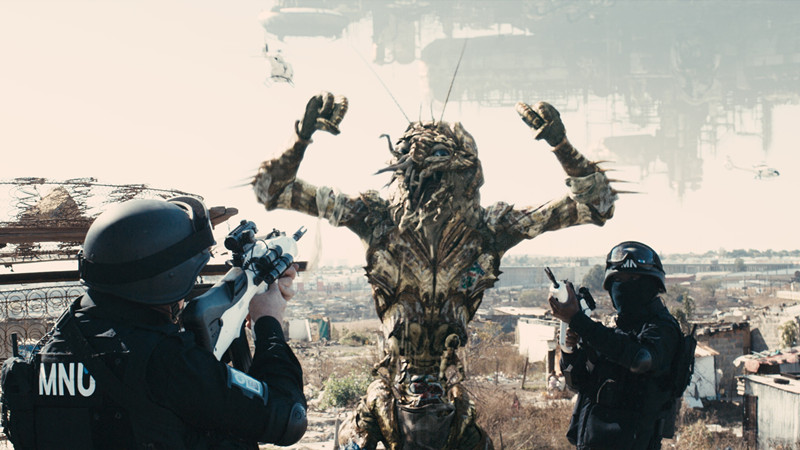
Produced by Peter Jackson, this highly creative and fresh indie Sci-Fi film on a small budget became an instant classic of the genre, getting nominated for 4 Academy Awards.
Once again, aliens arrive on Earth, this time not as invaders, but as war refugees. Seeking asylum, the aliens are forced by circumstances (and the gov’t) to live in a camp (District 9), in Johannesburg.
Years later, Wikus van de Merwe (Sharlto Copley), a clueless bureaucrat, is assigned to coordinate the relocation of refugees to a new camp outside the city, in order to alleviate some of the internal problems as well as the tensions between the local population and the “prawns”. In the process, Wikus gets exposed to an alien substance and things take a Cronenbergian turn. In the meantime, a few aliens must navigate various colliding interests while struggling to collect the fuel needed to start the dropship and leave.
Visionary Blomkamp blends commentary on xenophobia, racism and social segregation with a sci-fi premise to create a multi-layered dystopia, placing District 9 inside an already-troubled society. Hand-held camera work makes it a very realistic, documentary-like experience, while mech-suits, cool weaponry and plenty of bio-punk elements add flesh to an original script and an original world.
3. Mad Max: Fury Road (George Miller, 2015)
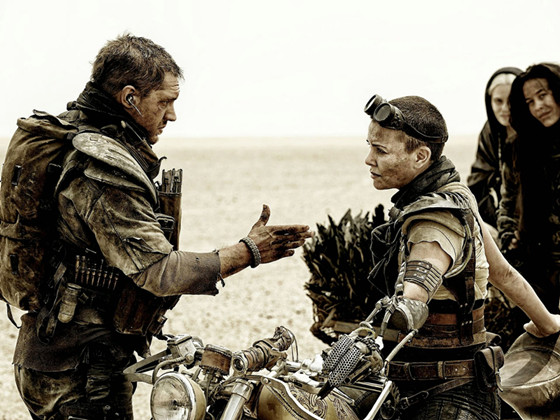
After being stuck in development hell for almost 15 years, ‘Fury Road’ finally broke loose, storming the Academy, sweeping 10 nominations and 6 Academy Awards, and bringing the revolution the action film genre had been waiting for. Thirty years after the original trilogy, Miller managed to top his own work, continuing the story of Max Rockatansky with a new high-octane chapter.
Max (Tom Hardy) is more like the main sidekick this time, Imperator Furiosa (Charlize Theron) representing the heart of the story, kicking-off the action and driving the plot back and forth, literally. The rather simple (yet effective) plot is enriched by visual and acoustic storytelling: body paint, make-up, scarified drawings of V8, goggles and belts, weird rituals and sayings, all make this grotesque society vibrant and compelling. The incredible soundtrack, that took Tom Holkenborg 18 months of work, turns the 2-hour chase across the orange wasteland into a symphony of bullets, destruction, explosions, carnage and death.
While most post-apocalyptic films use desaturated colors to offer a gloomy and depressive atmosphere, ‘Fury Road’ benefits from a stunning cinematography, with bright colors and stark contrasts. In an industry over-saturated with Teal & Orange, Fury Road does it right, crafting light before color; that is why it also works very well in black & white.
Everything about this film is turned up to ridiculous levels and volumes and it works because it does not hold back, it does not compromise. Almost 90% of the effects were practical, using stuntmen, acrobats, pyrotechnics, and 130 vehicles that were built only to be destroyed.
In a land where a vehicle with some gasoline ensures power, motion and survival, people worship their machines and the V8. The world has gone truly mad and everyone is dreaming of entering Valhalla, all “shiny and chrome”. What a lovely film!
2. Children of Men (Dir. Alfonso Cuaron, 2006)
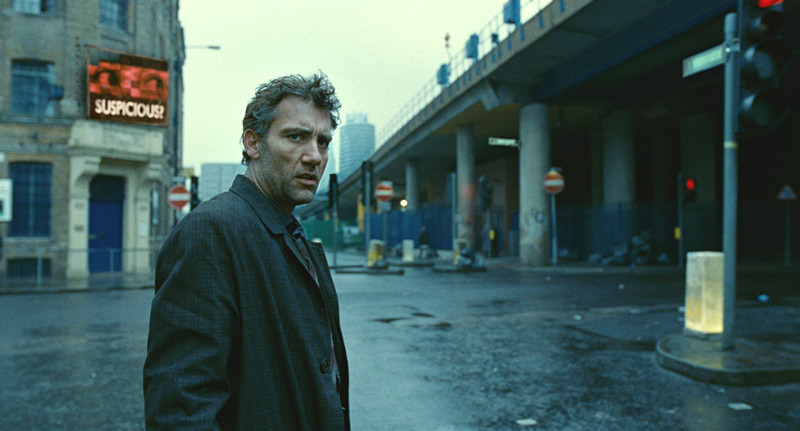
‘Children of Men’ is arguably a dystopian Sci-Fi masterpiece and one of the best films of the 21st century, depicting in considerable detail a society on the brink of collapse.
Following a plague, humanity has become infertile and the world is drowning in depression, sickness, radiation and chaos. UK, now a police state, is one of the very few governments still standing, while most people just go about their daily routine, simply waiting for life to end.
Former activist Theo Faron (Clive Owen), now a bitter and cynical bureaucrat, is persuaded to accept a dangerous mission. His task is to escort a young woman off the island, thus offering a chance of survival to the only known woman able to conceive, and hopefully to Humankind as well.
Lubezki’s bleak cinematography together with the very long takes create an immersive and suspenseful experience. The soundtrack makes extensive use of vibrato, emphasizing the human element, in a dehumanized world.
The story explores a scenario where the worst parts of what it means to be human are prevalent. The film almost makes you feel like Humankind does not even deserve to be saved if these are the individuals who represent it, and it makes the viewer wonder about the forces that keep us together as a society.
This is one of the darkest and most depressing sci-fi films in recent times. “Very odd what happens in a world without children’s voices”, without hope or future.
1. Blade Runner 2049 (Dir. Denis Villeneuve, 2017)
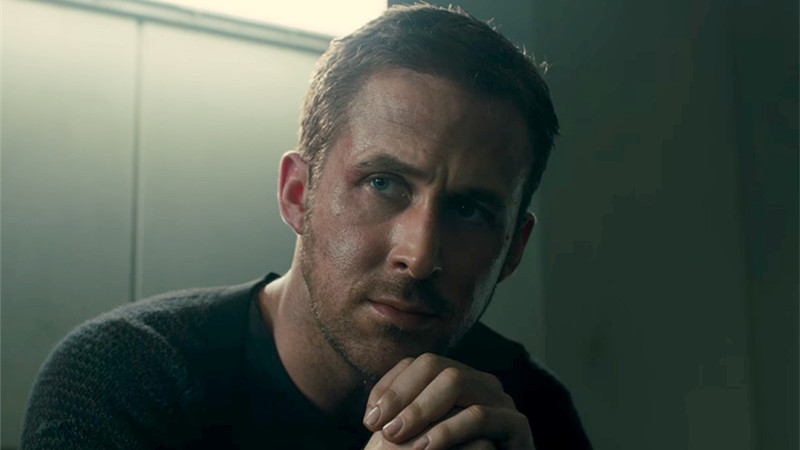
‘Blade Runner 2049’ is the philosophical neo-noir Sci-Fi dystopia we never knew we needed. Coming out 35 years after its predecessor, it is everything a sequel should be and more, working great as a standalone film.
The film expands on the original story and adds new elements to this cyberpunk (high-tech/low-life) society, creating its own identity. This world feels worse off than the last time we explored it. The climate is much harsher, the environment is toxic; there are vast junkyards and deserted areas with high radiation levels. The weather is bleak and gloomy, and a massive sea wall was built around the city to counter the effects of rising sea levels and global warming.
The people still living in this abandoned world had to find alternative sources of food. Many live a lonely life and the line between natural and synthetic is almost gone.
Replicant K (Ryan Gosling) is a blade runner, hunting and retiring rogue replicants. During a mission, he stumbles upon some intriguing clues that point towards replicants’ biological reproduction, previously thought impossible. Wallace Corp. (successor to the defunct Tyrell Corp.) wants to discover its secret and use it for interstellar colonization purposes. Harrison Ford makes a comeback as Deckard, bringing just the right dose of nostalgia, as well as emotion and depth to the story.
Although maybe not as haunting and memorable as the Vangelis score, the soundtrack by Zimmer & Wallfisch sustains and enhances the atmosphere with vast soundscapes and spacey/retro/drone/synth vibes.
Once again, this world feels real and tangible due to the amount of practical effects, miniatures, models, real props and physical sets, reducing the use of CGI to a minimum possible. Calling this film a visual masterpiece is probably an understatement, the incredible cinematography finally earning Roger Deakins his first (long-overdue) Oscar, after over 30 years of exceptional works. “Every frame a painting” indeed.
Are these visions of the future exaggerated projections of our hopes and fears? The tragic events of the 20th century exacerbated our fears and made our stories of the future ever darker, colder, more mature, more palpable, by hitting closer to home.
While utopian societies seem so disconnected from our reality, dystopias are a much more tangible subject of exploration, mainly because of our tendency to concentrate on our inherent flaws as individuals, as a society and as a species. Still, these artistic and intellectual exercises should only provide playground for speculation and forms of extreme escapism, and not ‘instruction manuals’ for the future of Humankind.
Honorable mentions and other recommendations of great dystopian films of the past two decades would include: A.I. Artificial Intelligence (2001), Equilibrium (2002), 28 days later (2002), Serenity (2005), V for Vendetta (2005), Wall-E (2008), or The Dark Knight Rises (2012).